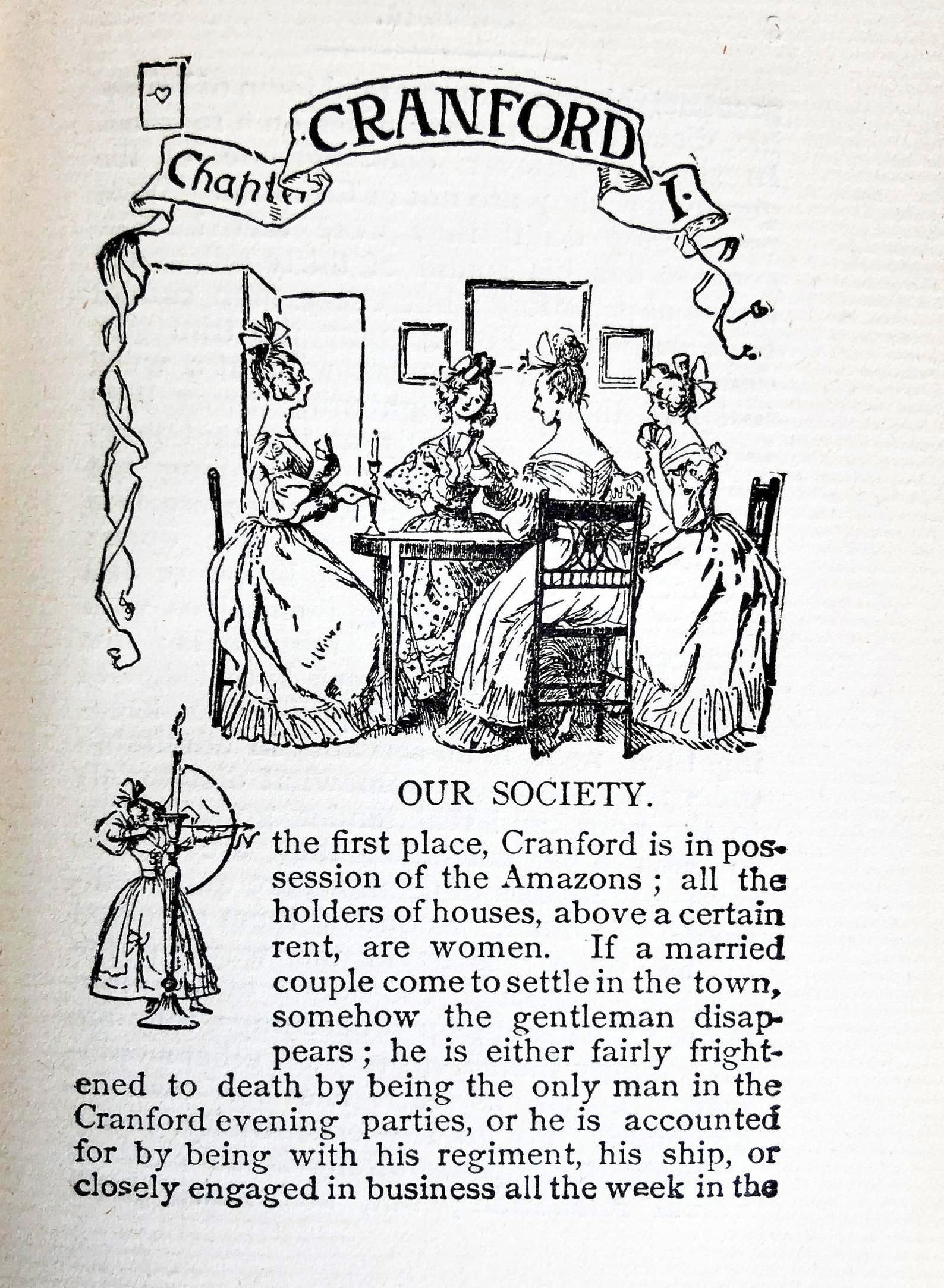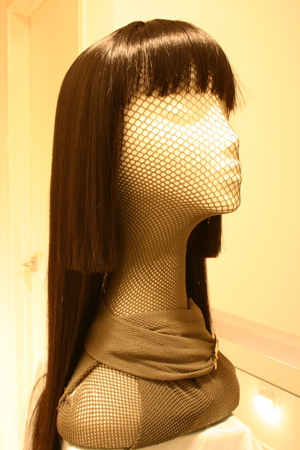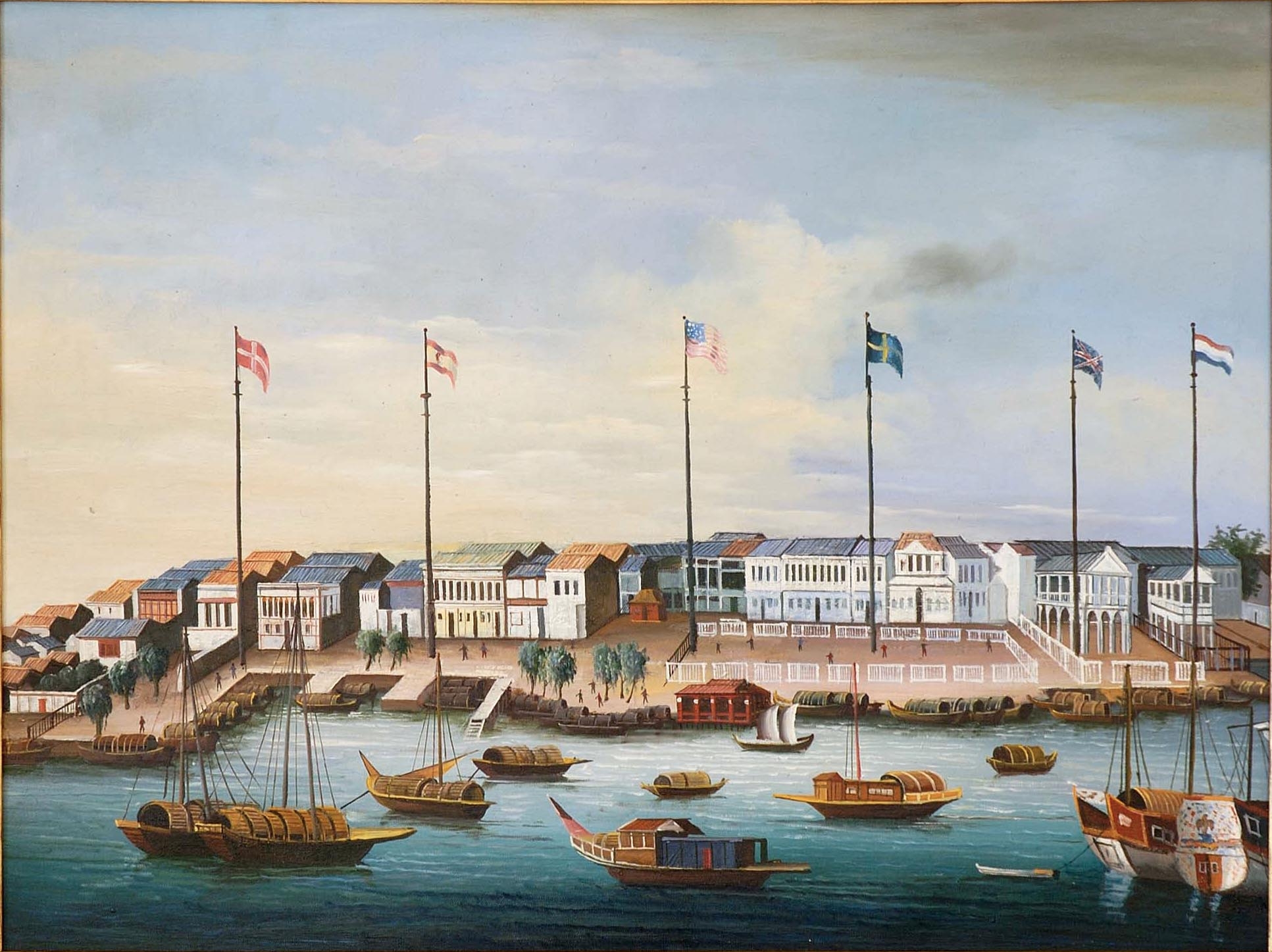|
Peau De Soie
Paduasoy or padesoy (; french: peau de soie) is a luxurious strong corded or grosgrain silk textile that originated in Early Modern Europe. The term ''paduasoy'' first appeared in English in 1663. Paduasoy silk was woven in a variation of the satin weave, with bindings arranged to create fine cross-ridges across the fabric. History In the British East India Company supercargoes' records, examined by Leanna Lee-Whitman, ''paduasoy'' made its first appearance in 1736. Its fine appearance is endorsed in a letter of Mrs. Benjamin Franklin to her husband in London, in 1765: "The chairs are plain horsehair and look as well as Paduasoy." In the British East India records consulted by Leanna Lee-Whitman, black paduasoys completely supplanted "plain" ones after 1761: George Washington commissioned a friend, Tench Tilghman, to purchase numerous household items, "if ''great bargains'' are to be had", from the cargo of a ship in the China trade that had docked at Baltimore and were to be ... [...More Info...] [...Related Items...] OR: [Wikipedia] [Google] [Baidu] |
Evening Gown Worn By Mrs
Evening is the period of a day that starts at the end of the afternoon and overlaps with the beginning of night. The exact times when evening begins and ends depend on location, time of year, and culture, but it is generally regarded as beginning when the Sun is low in the sky and lasting until the end of twilight. Depending on the speaker, it may start as early as 5 p.m. and to last until night. It may be used colloquially to include the last waning afternoon shortly before sunset. Etymology The word is derived from the Old English ''ǣfnung'', meaning 'the coming of evening, sunset, time around sunset', which originated from ''æfnian'', meaning "become evening, grow toward evening". The Old English ''æfnian'' originated from ''æfen'' (eve), which meant "the time between sunset and darkness", and was synonymous with even (Old English ''æfen''), which meant the end of the day. The use of "evening" dates from the mid 15th century. See also * Crepuscular – animals that ar ... [...More Info...] [...Related Items...] OR: [Wikipedia] [Google] [Baidu] |
Beatrix Potter
Helen Beatrix Potter (, 28 July 186622 December 1943) was an English writer, illustrator, natural scientist, and conservationist. She is best known for her children's books featuring animals, such as ''The Tale of Peter Rabbit'', which was her first published work in 1902. Her books, including 23 Tales, have sold more than 250 million copies. Potter was also a pioneer of merchandising—in 1903, Peter Rabbit was the first fictional character to be made into a patented stuffed toy, making him the oldest licensed character. Born into an upper-middle-class household, Potter was educated by governesses and grew up isolated from other children. She had numerous pets and spent holidays in Scotland and the Lake District, developing a love of landscape, flora and fauna, all of which she closely observed and painted. Potter's study and watercolours of fungi led to her being widely respected in the field of mycology. In her thirties, Potter self-published the highly successful childre ... [...More Info...] [...Related Items...] OR: [Wikipedia] [Google] [Baidu] |
Cranford (novel)
''Cranford'' is an episodic novel by the English writer Elizabeth Gaskell. It first appeared in instalments in the magazine '' Household Words'', then was published with minor revisions as a book with the title ''Cranford'' in 1853. The work slowly became popular and from the start of the 20th century it saw a number of dramatic treatments for the stage, the radio and TV. Background The fictional Cranford is based on the small Cheshire town of Knutsford in which Elizabeth Gaskell grew up. She had already drawn on her childhood memories for an article published in America, "The Last Generation in England" (1849), and for the town of Duncombe which featured in her extended story " Mr. Harrison's Confessions" (1851). These accounts of life in a country town and the old-fashioned class snobbery prevailing there were carried over into what was originally intended simply as another story, published as "Our Society in Cranford" in the magazine Household Words in December 1851. See ... [...More Info...] [...Related Items...] OR: [Wikipedia] [Google] [Baidu] |
Elizabeth Gaskell
Elizabeth Cleghorn Gaskell (''née'' Stevenson; 29 September 1810 – 12 November 1865), often referred to as Mrs Gaskell, was an English novelist, biographer and short story writer. Her novels offer a detailed portrait of the lives of many strata of Victorian society, including the very poor. Her work is of interest to social historians as well as readers of literature. Her first novel, ''Mary Barton'', was published in 1848. Gaskell's ''The Life of Charlotte Brontë'', published in 1857, was the first biography of Charlotte Brontë. In this biography, she wrote only of the moral, sophisticated things in Brontë's life; the rest she omitted, deciding certain, more salacious aspects were better kept hidden. Among Gaskell's best known novels are '' Cranford'' (1851–53), ''North and South'' (1854–55), and ''Wives and Daughters'' (1865), all having been adapted for television by the BBC. Early life Gaskell was born Elizabeth Cleghorn Stevenson on 29 September 1810 in Lindsey ... [...More Info...] [...Related Items...] OR: [Wikipedia] [Google] [Baidu] |
Gloucester
Gloucester ( ) is a cathedral city and the county town of Gloucestershire in the South West of England. Gloucester lies on the River Severn, between the Cotswolds to the east and the Forest of Dean to the west, east of Monmouth and east of the border with Wales. Including suburban areas, Gloucester has a population of around 132,000. It is a port, linked via the Gloucester and Sharpness Canal to the Severn Estuary. Gloucester was founded by the Romans and became an important city and '' colony'' in AD 97 under Emperor Nerva as '' Colonia Glevum Nervensis''. It was granted its first charter in 1155 by Henry II. In 1216, Henry III, aged only nine years, was crowned with a gilded iron ring in the Chapter House of Gloucester Cathedral. Gloucester's significance in the Middle Ages is underlined by the fact that it had a number of monastic establishments, including: St Peter's Abbey founded in 679 (later Gloucester Cathedral), the nearby St Oswald's Priory, Glo ... [...More Info...] [...Related Items...] OR: [Wikipedia] [Google] [Baidu] |
Taffeta
Taffeta (archaically spelled taffety or taffata) is a crisp, smooth, plain woven fabric made from silk, cuprammonium rayons, acetate, and polyester. The word is Persian (تافته) in origin and means "twisted woven". As clothing, it is used in ball gowns, wedding dresses, and corsets, and in interior decoration for curtains or wallcovering. It tends to yield a stiff, starched-like cloth that holds its shape better than many other fabrics and does not sag or drape. Silk taffeta is of two types: yarn-dyed and piece-dyed. Piece-dyed taffeta is often used in linings and is quite soft. Yarn-dyed taffeta is much stiffer and is often used in evening dresses. Shot silk taffeta was one of the most highly-sought forms of Byzantine silk, and may have been the fabric known as ''purpura''. Production Modern taffeta was first woven in Italy and France and until the 1950s in Japan. Warp-printed taffeta or ''chiné'', mainly made in France from the 18th century onwards, is sometimes calle ... [...More Info...] [...Related Items...] OR: [Wikipedia] [Google] [Baidu] |
Waistcoats
A waistcoat ( UK and Commonwealth, or ; colloquially called a weskit), or vest ( US and Canada), is a sleeveless upper-body garment. It is usually worn over a dress shirt and necktie and below a coat as a part of most men's formal wear. It is also sported as the third piece in the traditional three-piece male suit. Any given waistcoat can be simple or ornate, or for leisure or luxury. Historically, the waistcoat can be worn either in the place of, or underneath, a larger coat, dependent upon the weather, wearer, and setting. Daytime formal wear and semi-formal wear commonly comprises a contrastingly coloured waistcoat, such as in buff or dove gray, still seen in morning dress and black lounge suit. For white tie and black tie, it is traditionally white and black, respectively. Name The term ''waistcoat'' is used in the United Kingdom and many Commonwealth countries. The term ''vest'' is used widely in the United States and Canada, and is often worn as part of formal att ... [...More Info...] [...Related Items...] OR: [Wikipedia] [Google] [Baidu] |
Lappets
A lappet is a decorative flap, fold or hanging part of a headdress or garment. Lappets were a feature of women's headgear until the early twentieth century, and are still a feature of religious garments. Examples of lappets are to be found on the papal tiara and on the nemes headdress of the kings of ancient Egypt. The same term is also used for similar-looking anatomical features on some animals. On women's headdresses Lappets were attached to some types of women's headdresses, notably the medieval hennin. They were also called cornet, although ''cornet'' sometimes referred to the hennin itself. On episcopal mitres The mitres worn by bishops and abbots of Western liturgical denominations, such as the Roman Catholic Church and the Church of England, have lappets attached to them. Mitre lappets are often lined with red silk. The lappets are probably a vestige of the ancient Greek headband called a ''mitra'' (μίτρα), from which the mitre itself descends. The ''mitra'' ... [...More Info...] [...Related Items...] OR: [Wikipedia] [Google] [Baidu] |
Periwig
A wig is a head or hair accessory made from human hair, animal hair, or synthetic fiber. The word wig is short for periwig, which makes its earliest known appearance in the English language in William Shakespeare's ''The Two Gentlemen of Verona''. Some people wear wigs to disguise baldness; a wig may be used as a less intrusive and less expensive alternative to medical therapies for restoring hair or for a religious reason. History Ancient and medieval use In Egyptian society men and women commonly had clean shaven or close cropped hair and often wore wigs. The ancient Egyptians created the wig to shield shaved, hairless heads from the sun. They also wore the wigs on top of their hair using beeswax and resin to keep the wigs in place. Wealthy Egyptians would wear elaborate wigs and scented head cones of animal fat on top of their wigs. Other ancient cultures, including the Assyrians, Phoenicians, Jews in ancient Israel, Greeks and Romans, also used wigs as an everyday fashion. ... [...More Info...] [...Related Items...] OR: [Wikipedia] [Google] [Baidu] |
The Tailor Of Gloucester
''The Tailor of Gloucester'' is a children's book written and illustrated by Beatrix Potter, privately printed by the author in 1902, and published in a trade edition by Frederick Warne & Co. in October 1903. The story is about a tailor whose work on a waistcoat is finished by the grateful mice he rescues from his cat and was based on a real world incident involving a tailor and his assistants. For years, Potter declared that of all her books it was her personal favourite. Composition In the summer of 1901, Potter was working on ''The Tale of Squirrel Nutkin'', but took time to develop a tale about a poor tailor she heard in the Gloucestershire home of her cousin Caroline Hutton probably in 1897. The tale was finished by Christmas 1901, and given as a Christmas present to ten-year-old Freda Moore, the daughter of her former governess. The tale was based on a real world incident involving John Prichard (1877–1934), a Gloucester tailor commissioned to make a suit for the new ... [...More Info...] [...Related Items...] OR: [Wikipedia] [Google] [Baidu] |
Old China Trade
The Old China Trade () refers to the early commerce between the Qing Empire and the United States under the Canton System, spanning from shortly after the end of the American Revolutionary War in 1783 to the Treaty of Wanghia in 1844. The Old China Trade represented the beginning of relations between the United States and East Asia, including eventually U.S.–China relations. The maritime fur trade was a major aspect of the Old China Trade, as was illegal trafficking in opium. The trade era overlapped the First Opium War, which resulted from an attempt by China to enforce its prohibition on opium smuggling by Western traders and blockade-runners between 1839–1842. Origins Anglo-American hostilities ceased in 1783 following the Second Treaty of Paris that ended the American Revolutionary War and subsequently freed American trade from British control. At the time, increased global demand for tea was one of the primary reasons for a shortage of silver; this was the only curren ... [...More Info...] [...Related Items...] OR: [Wikipedia] [Google] [Baidu] |
Grosgrain
Grosgrain ( , also sometimes ) is a type of fabric or ribbon defined by the fact that its weft is heavier than its warp, creating prominent transverse ribs. Grosgrain is a plain weave corded fabric, with heavier cords than poplin but lighter than faille, and is known for being a firm, close-woven, fine-corded fabric. Grosgrain has a dull appearance, with little luster in comparison to many fabric weaves, such as satin, often used for ribbons; however, it is comparatively very strong. Grosgrain fabric is most commonly available in black, but grosgrain ribbon comes in a large variety of colors and patterns. The ribbon is very similar to Petersham ribbon in its appearance, but it does not have the ability to follow the curves of a surface or edge the way that the latter does. "Grosgrain" is commonly used to refer to a heavy, stiff ribbon of silk or nylon woven via taffeta weave using a heavy weft, which results in distinct transverse ribs. Historically, grosgrain was made from wo ... [...More Info...] [...Related Items...] OR: [Wikipedia] [Google] [Baidu] |



_drawn_and_engraved_under_the_direction_of_Edward_Wedlake_Brayley.jpg)
.jpg)



